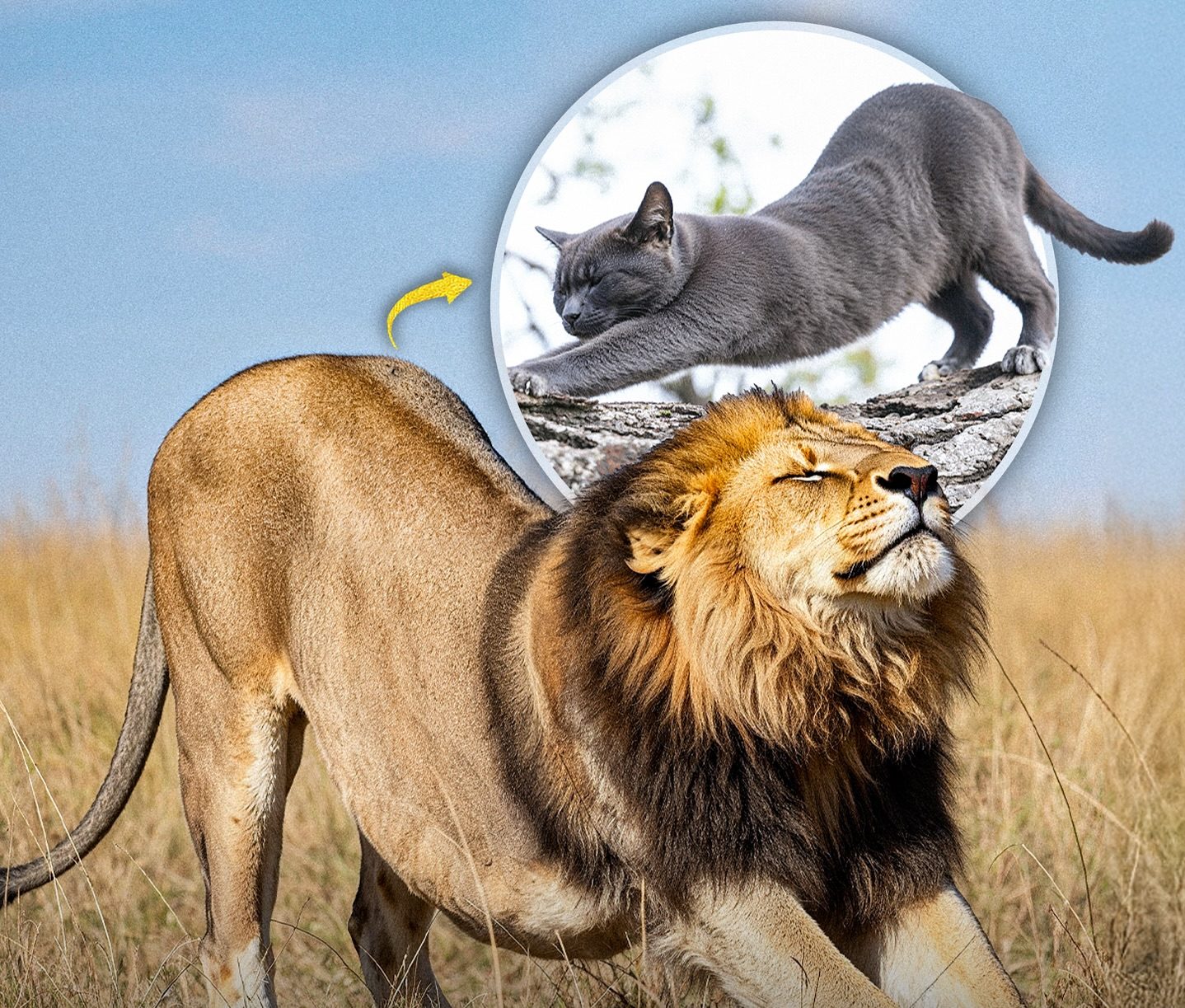From Couch Kittens to Lions on the Savannah, All Cats Share the Same Signature Stretch That Keeps Them Ready for Action
There’s something almost magical about the way cats stretch. If you live with a house cat, you’ve probably seen it a dozen times a day. That long, slow arch of the back, the front paws pushing forward, claws sometimes extending just enough to scratch the carpet or the couch, the head lowering as if every muscle is being reset. It’s one of the most familiar and comforting sights in any cat owner’s daily life. What many people don’t realize is that this same exact movement isn’t just a cute house cat habit—it’s a universal behavior shared by all cats, from your four-kilo pet at home to the 200-kilo lions sprawled in the grasslands of Africa.
The science behind this fascinating similarity lies in the fact that every single cat belongs to the same family, Felidae. That family tree connects the domesticated cats we live with to their wild relatives, including lions, tigers, cheetahs, and leopards. Despite their differences in size, habitat, and daily routines, their bodies are built on the same blueprint. One of the most noticeable features of that blueprint is the feline stretch, technically called “pandiculation.” It’s that full-body reset after sleep or long periods of rest, and it’s not only instinctual but essential for survival.
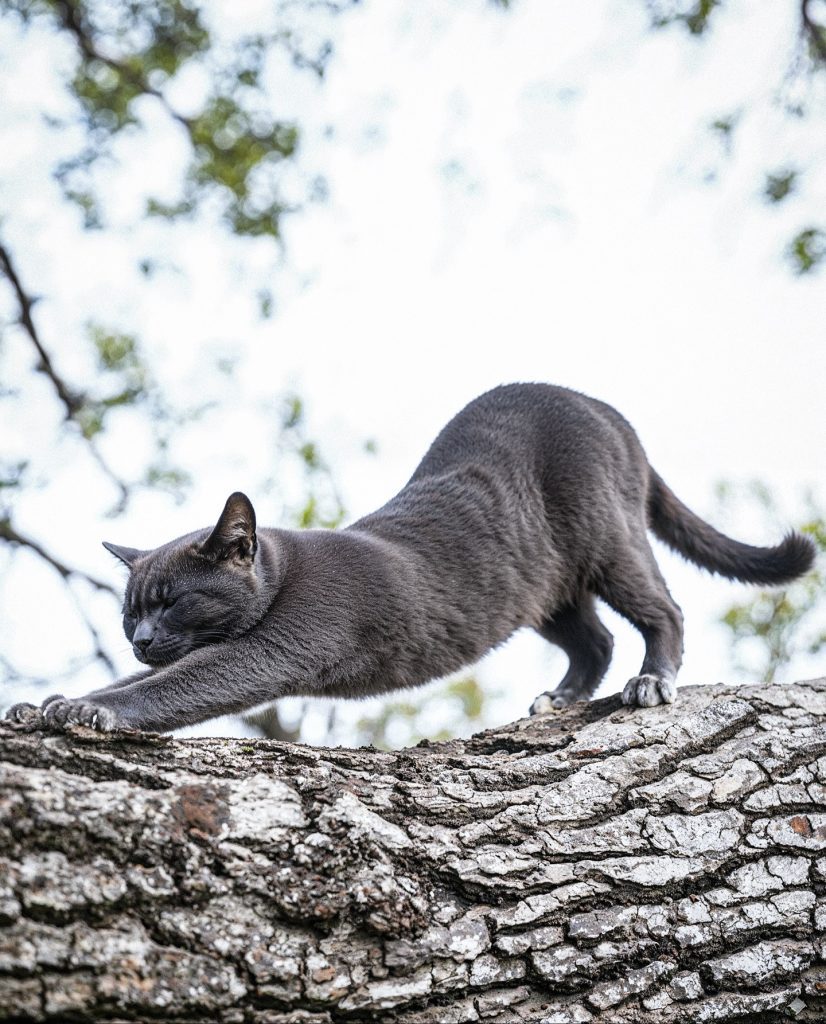
Your average house cat spends between 12 and 16 hours of every day asleep. That’s a huge portion of their lives. Because of this, stretching is critical. After a nap, a cat’s muscles are stiff, their blood circulation has slowed, and their alertness drops. The stretch restores flexibility, increases blood flow, and prepares the body to spring into action. Even though your couch cat’s biggest challenge might be chasing a feather toy, their instincts are tuned for hunting. That full-body stretch ensures they can leap, sprint, or pounce without hesitation.
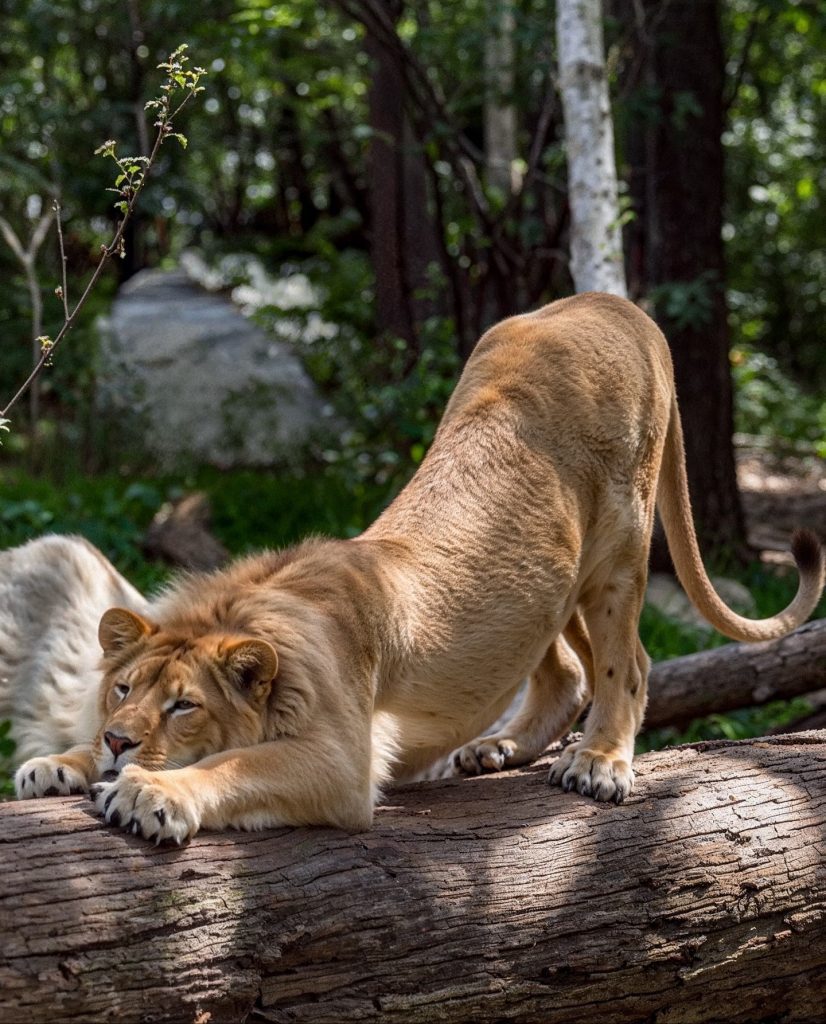
Now compare that to lions, the kings of the savannah. They can sleep even longer—up to 20 hours a day. Much like house cats, they need to stretch frequently. Every stretch gets their bodies ready to chase down prey or defend their pride. For a lion, failing to move properly after rest could mean the difference between catching a meal or going hungry. Watching a lion stretch is almost like watching an oversized house cat—it’s the same sequence, the same satisfaction, the same primal preparation. The only difference is scale.
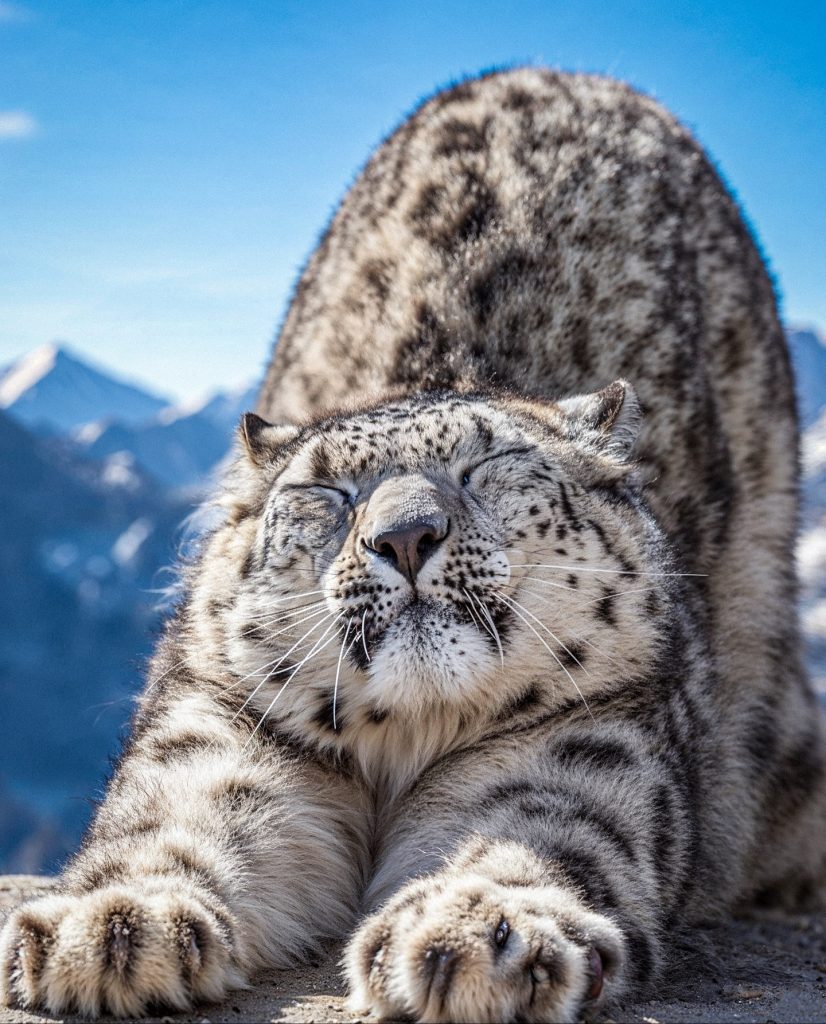
There’s something beautifully humbling about this. People often think of lions and tigers as these ferocious, untouchable creatures, but when you catch them stretching in the wild, you suddenly see the house cat in them. The way they close their eyes, press their paws forward, and tilt their heads looks almost identical to what your pet does after waking from an afternoon nap. It’s a reminder that, despite the worlds that separate them, all cats carry the same heritage in their bones.
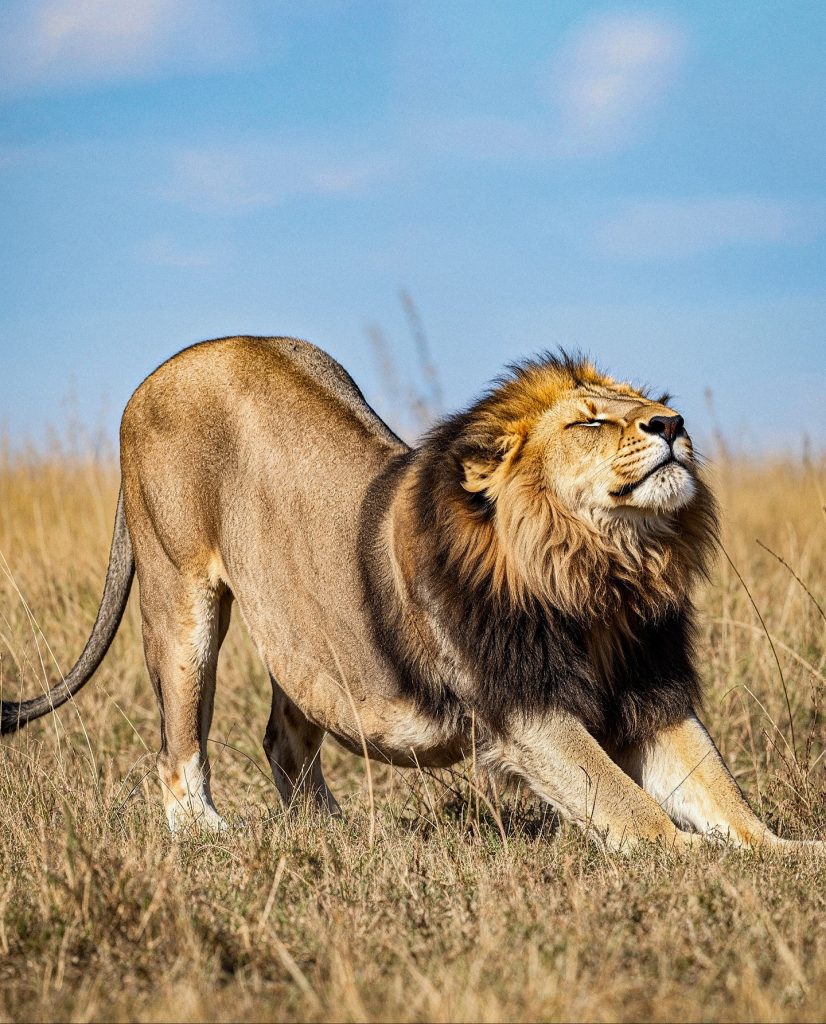
Scientists have studied pandiculation across species, not just in cats, and found that it plays a vital role in neurological health. The stretch helps stimulate the nervous system, resets muscle tone, and keeps reflexes sharp. For cats, who rely on lightning-fast reflexes to hunt or defend themselves, this routine is non-negotiable. Whether they’re stalking a wildebeest or batting at a toy mouse, the mechanics of their bodies demand the same preparation.
For cat owners, this similarity often brings joy. It means that the fluffy companion you share your sofa with isn’t just a domesticated pet but also a miniature predator with the same instincts as the great cats of the world. That’s why watching your cat stretch can sometimes feel like watching nature at work—graceful, ancient, and universal. The beauty of felines is that they carry the elegance of wild predators in the small, accessible package of a pet.
Stretching also plays a role in bonding. In domestic cats, stretching in front of humans is often a sign of trust. When a cat stretches, especially on its back or belly, it makes itself vulnerable for a few seconds. If your cat does this in your presence, it’s an indication that they feel safe around you. While we can’t say for sure whether lions use stretching in social bonding the same way, observing a pride shows that communal stretches often happen as lions wake up together, a subtle reinforcement of their unity.
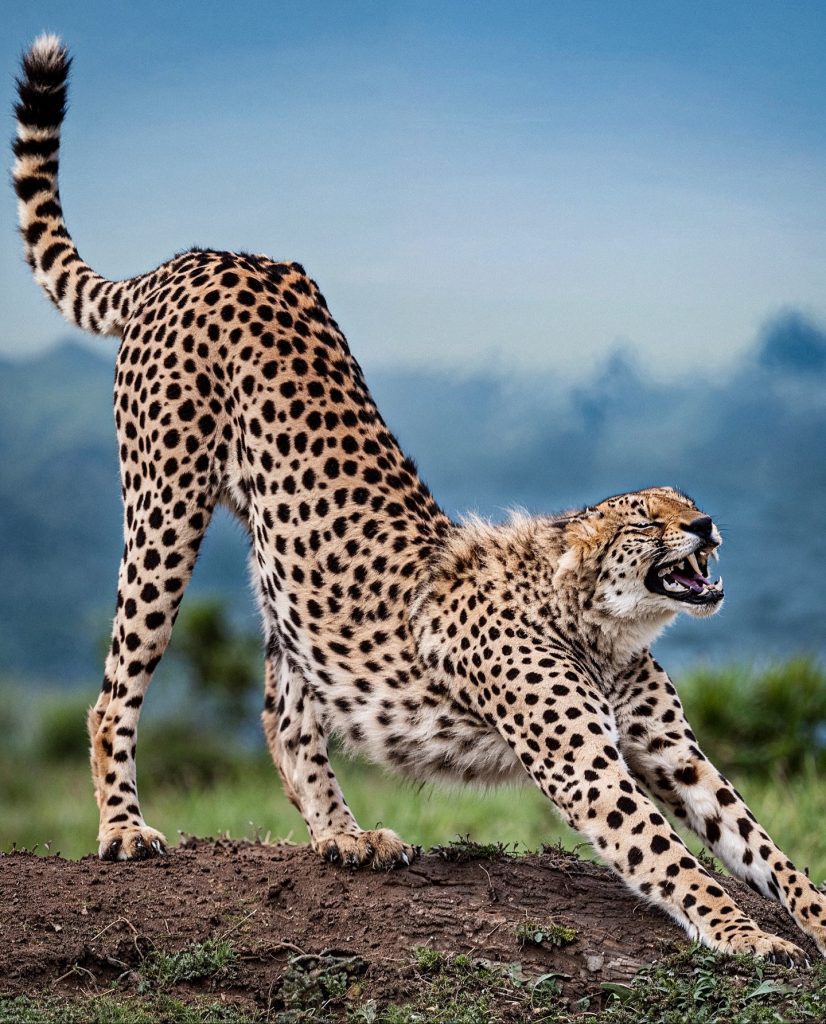
Culturally, cats have always fascinated humans with their balance of lethargy and sudden energy. Stretching is the bridge between these two states. It’s the visible cue that tells us the nap is over and readiness has returned. In Egyptian art, cats were often shown in repose or mid-stretch, highlighting their dual roles as both symbols of relaxation and powerful hunters. Even today, the internet is full of videos of cats stretching in all sorts of dramatic and adorable ways. It resonates with us because it’s familiar—we all stretch when we wake—but cats seem to elevate it into something more graceful, almost ceremonial.
When you see a lion stretching against the backdrop of golden grass, or a house cat doing the same in your living room, you’re witnessing one of the purest examples of shared biology across the animal kingdom. It’s a gesture that transcends environment, size, and circumstance. No matter where they live or how they survive, cats are united by this instinct.
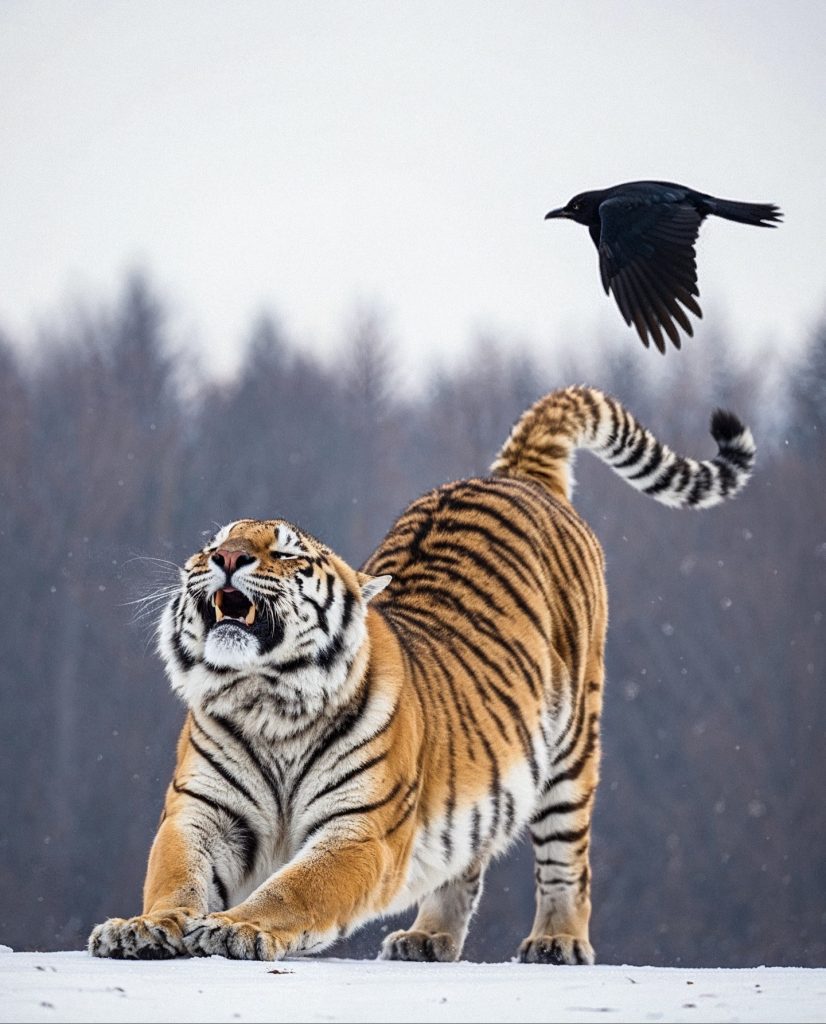
The next time you catch your pet cat arching its back and yawning, think of the lions in Africa, the tigers in Asia, the leopards perched in trees, all doing the same motion. It’s a reminder of their wild heritage and their place in a lineage of predators that has stretched, hunted, and survived for millions of years. From the smallest kitten to the most powerful lion, the stretch is their signature reset, their way of waking up ready for whatever comes next.
And maybe, just maybe, when your cat stretches in the morning sun, it connects you not only to them but also to the vast, beautiful web of life they represent. In that shared moment, the living room and the savannah don’t feel so far apart.

